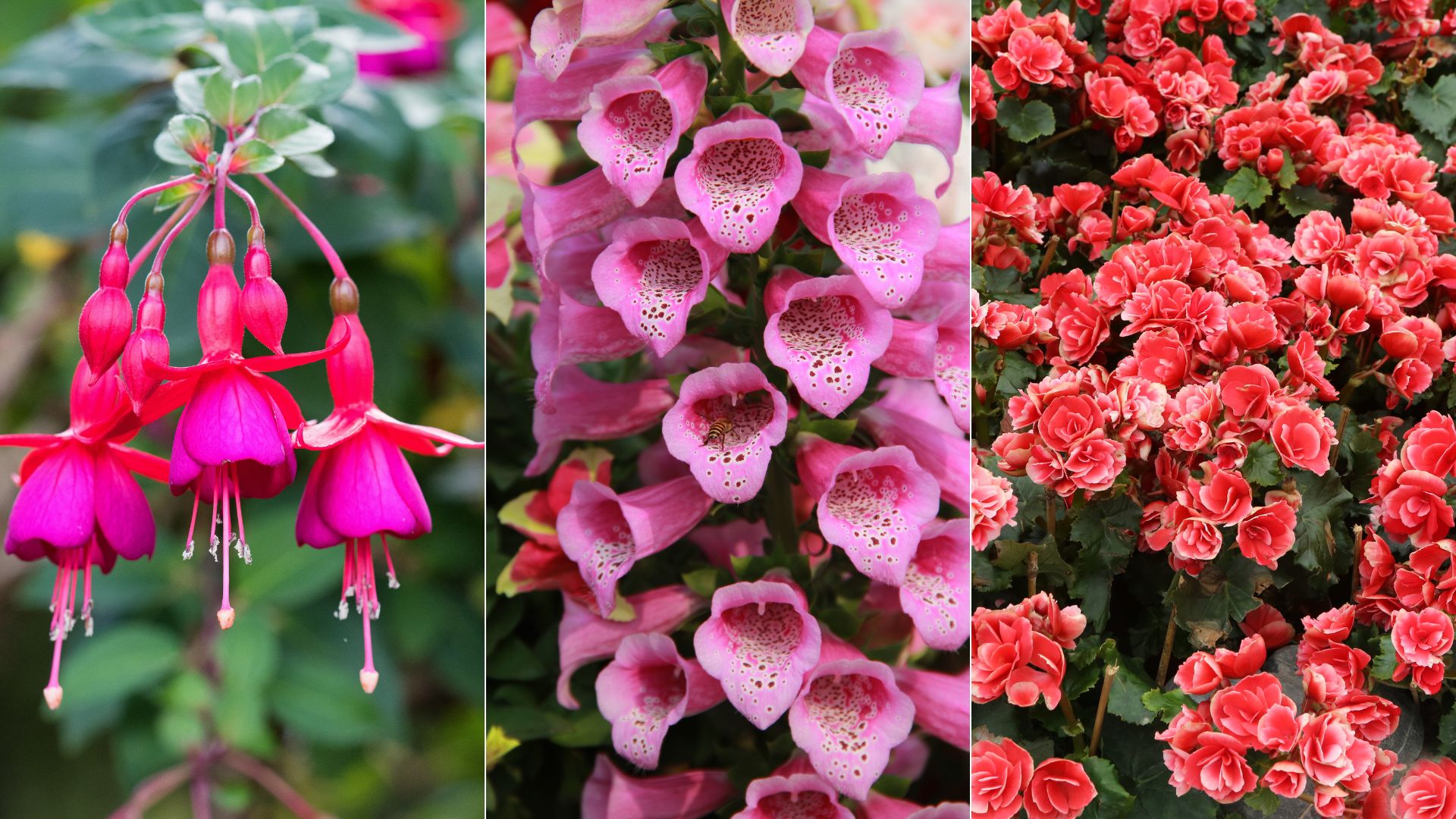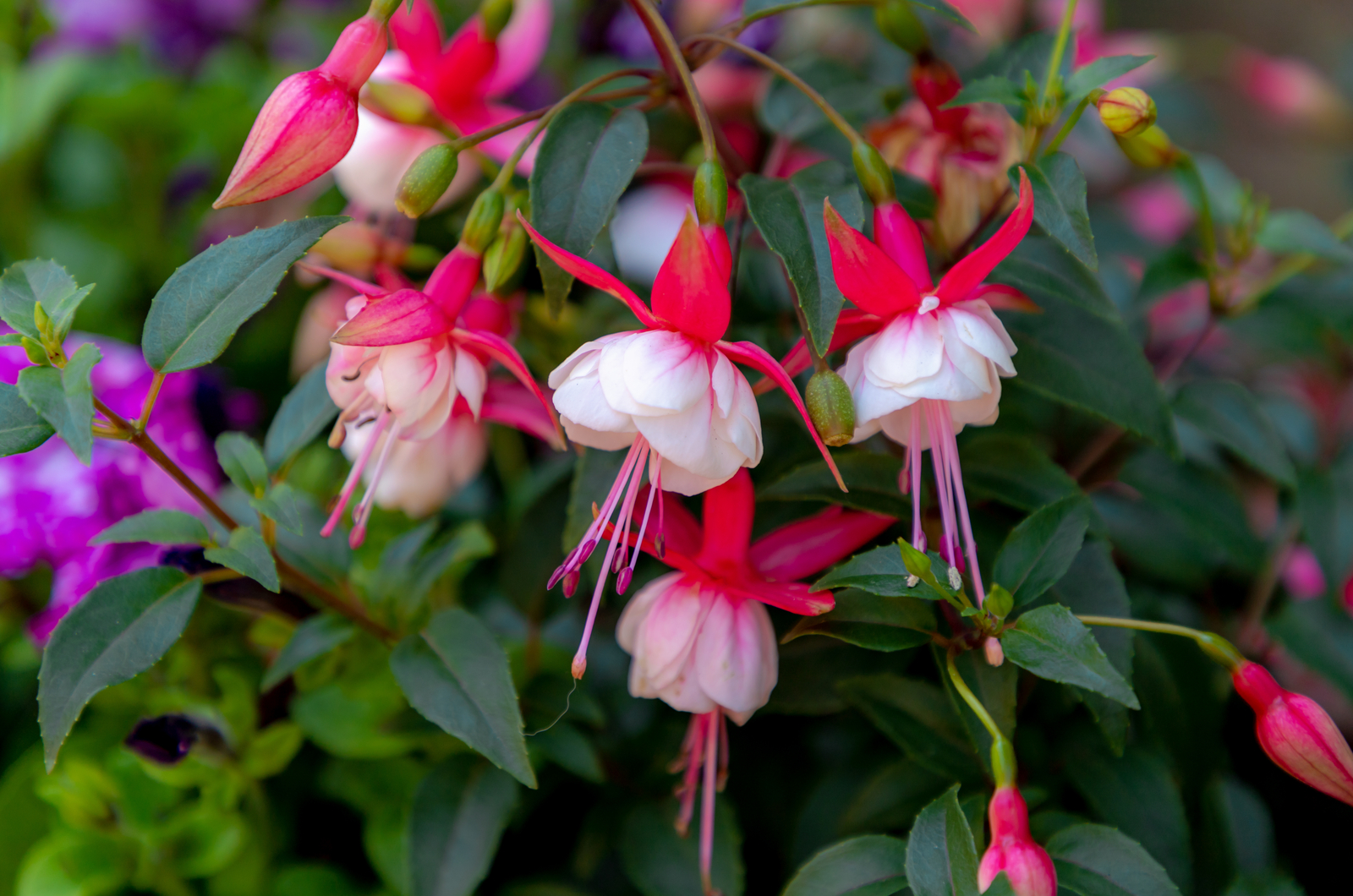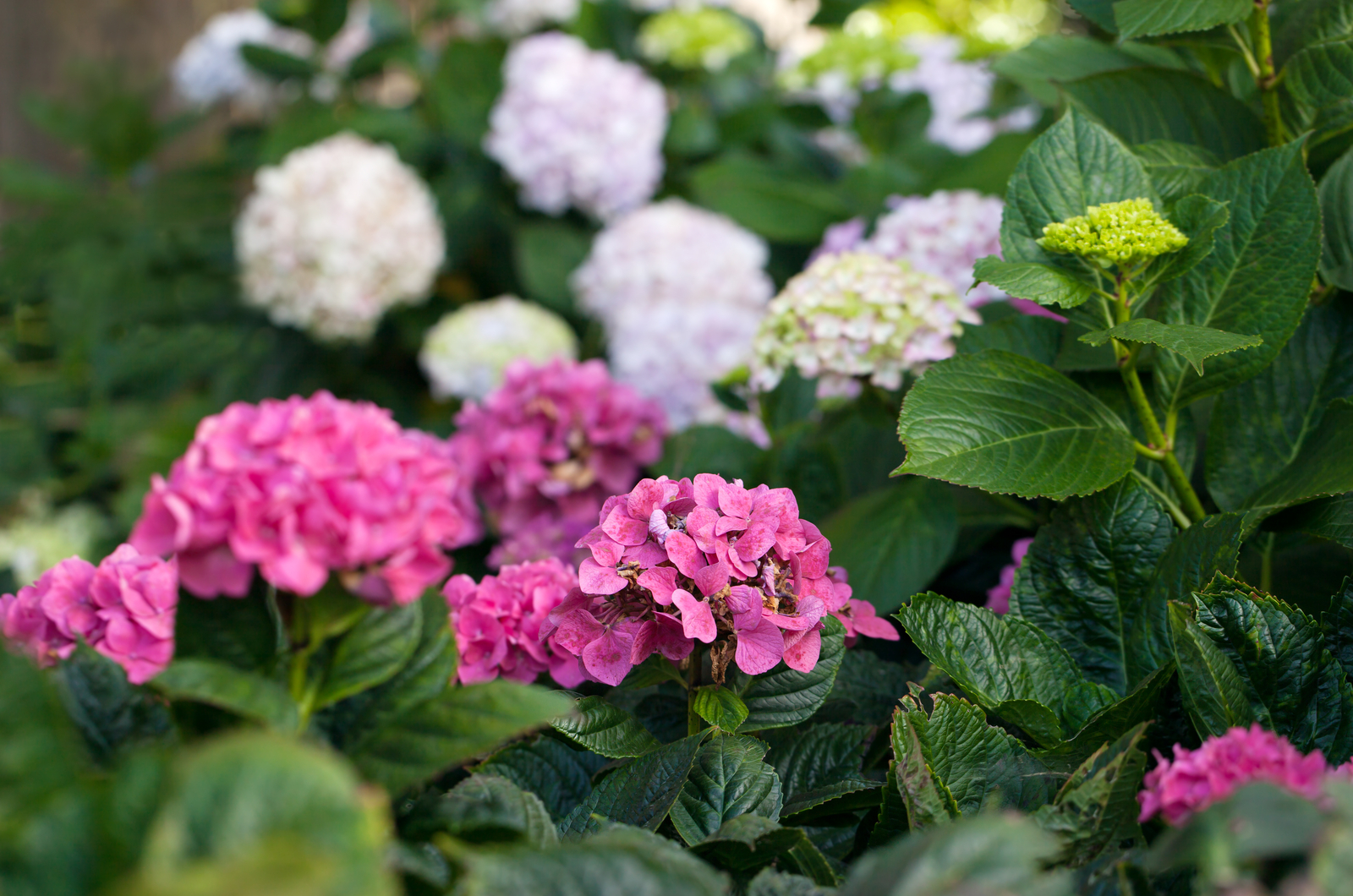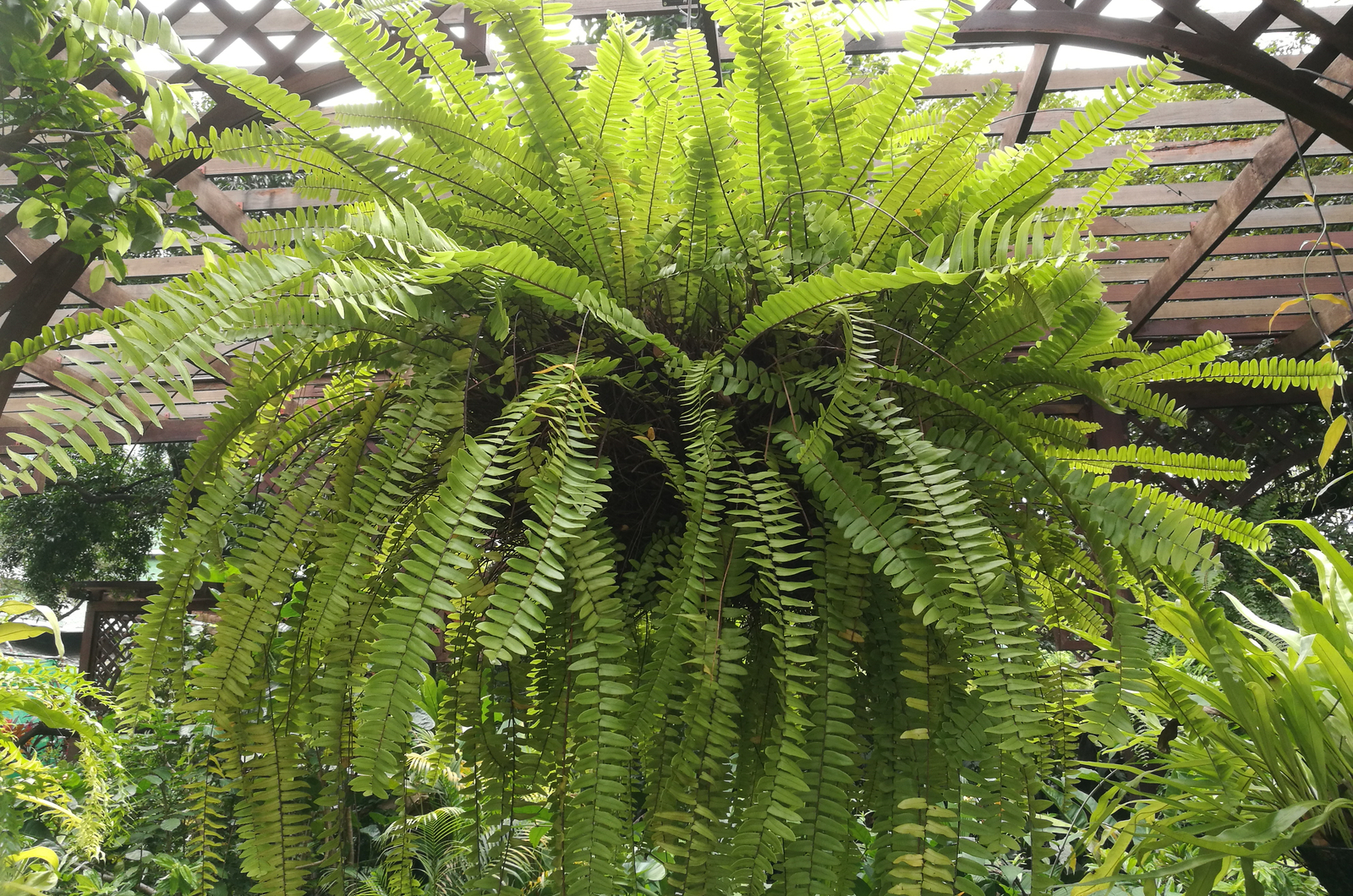No matter how sunny your garden is, there will always be that shady part where many plants struggle to grow.
Plants do need light for healthy development but the good news is that some species tolerate lower light levels and that’s exactly the feature you need to look for.
Don’t worry, I’ll help you out and show you 7 beautiful plants that thrive in the shade.
Let’s get started!
1. Fuchsia
The colorful blossoms of fuchsia plants adorn gardens worldwide. But beauty isn’t the only thing this amazing plant has to offer.
First, it’s a super easy plant to maintain and even those who haven’t had any experience with plants so far can keep it healthy and happy.
Fuchsias grow well in both full sun and partial shade. From my experience, some varieties with pale blossoms, such as Hawkshead, can survive in full shade.
These plants are used to lower light levels because of their natural habitat.
It would be best to plant your fuchsias in summer and keep their soil moist until they establish fully.
You can plant them directly in the flower bed or keep them in containers; no matter which method you choose, your garden will have a unique display of colors!
2. Foxglove
I have an amazing plant for those who love cottage garden design but their outdoor space lacks light. Meet the foxglove, a spectacular plant with enchanting spires of bell-shaped blossoms.
This plant is highly adaptable to various light levels and will fit perfectly into that bare spot in the shady corner of your yard.
Foxglove is one of the plants you can plant in August to give it a head start for the next season. There are many varieties of this plant but white types perform best in full shade and, as an added bonus, they’re highly tolerant to dry conditions.
Even though Digitalis species (foxglove) thrive in various soil types, for best results you should plant them in free-draining, moist, and nutrient-rich soil.
3. Hydrangea
Here’s a plant you’ll see in almost every garden. Hats off to hydrangeas! These beauties feature splendid clusters of blossoms that come in various colors.
One of the most interesting facts about this plant is that you can actually change hydrangea colors by adjusting the pH levels in the soil.
These plants grow well in full sun to partial shade but some varieties, such as oakleaf hydrangeas, develop healthily even in complete shade.
You can use hydrangeas as edging plants or grow them in pots. Make sure to keep their soil moist; you may need to water twice a week during the hot summer months.
4. Begonia
Honestly, I was surprised when I learned that begonias don’t need a lot of sun to thrive. Before I got my first begonia, I had had a couple of flowering plants that enjoyed direct sunlight.
But, the easiest way to keep begonias in bloom is to ensure partial shade. I’ve read a couple of times that some varieties thrive in full shade, but upon further research and from my own experience, this isn’t true.
Insufficient light may lead to stunted growth and lack of blooms in begonia plants, so it’s better to be on the safe side and grow them in semi-shaded locations.
These plants can grow from 6 inches to 3 feet, depending on the species. You can keep them in containers or plant them directly in the ground in flower beds if you live in warmer climates.
Apart from some shade, keep begonia soil constantly moist but make sure the soil is free-draining to prevent water accumulation in the root zone.
5. Ferns
Hailing from moist and shady woodlands, ferns make perfect plants for gardens that lack light.
There are many evergreen ferns to choose from; I recommend shield ferns and bird’s nest ferns.
Partially or fully shaded areas work great for ferns but never expose them to the full sun because it will burn the delicate fronds and the leaves will become dry and crisp.
You can also use ferns for privacy but remember to check the estimated height because not every fern will develop into a tall plant.
Shorter species can make captivating ground covers in your outdoor space.
6. Foamflower
One of the most spectacular woodland plants is the foamflower. It features splendid heart-shaped foliage and white foam-like blossoms, hence the name.
Don’t let the delicate appearance of the foamflower plant fool you; this is a hardy native species that thrives in the shade.
You can use these plants in rock garden designs or plant them as ground covers. These are evergreen plants, which means your backyard won’t lack color all year round.
7. Hosta
Here comes the queen of foliage plants, the one and only, hosta! You can choose among a wide range of hosta varieties and some may even have variegated leaves.
Some cultivars will start as 4 inch plants and develop into large, up to 6 feet-wide plants.
The shade won’t inhibit the growth of these plants and the species that perform best in these locations are Stained glass and Touch of glass hostas.
The essential thing to remember is that these plants don’t tolerate drought, so make sure to check on their soil regularly and add water whenever the soil surface is dry.
One of the advantages of hostas is that it’s a plant that prevents weeds. But, the disadvantage is that it attracts wildlife, such as rabbits and deer.
Therefore, pay attention to where you plant your hostas if you have issues with these cute but mischievous creatures.
Don’t let the shade in some parts of your yard discourage you from adding plants. Simply choose a plant(s) from this list and follow our guidelines to help them develop into healthy garden beauties!





